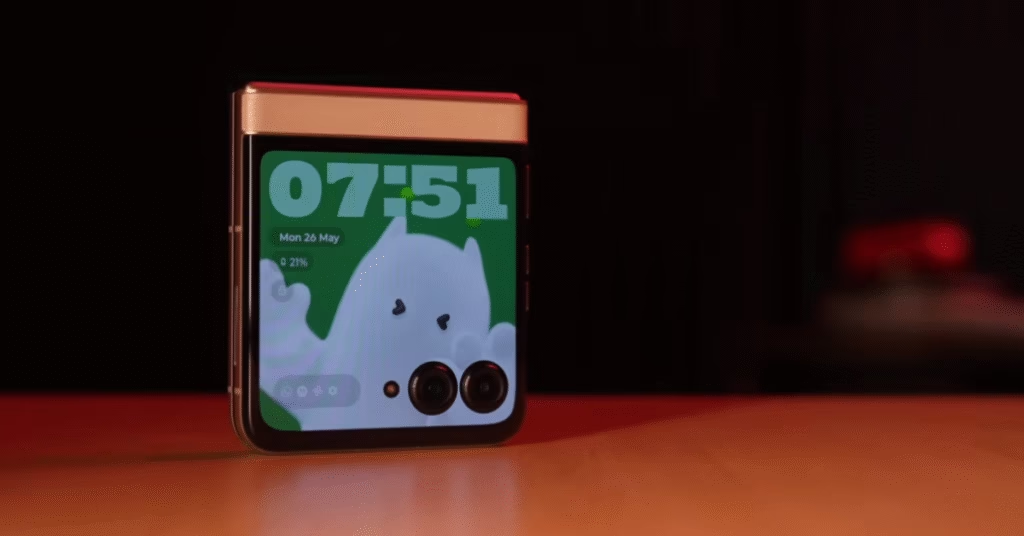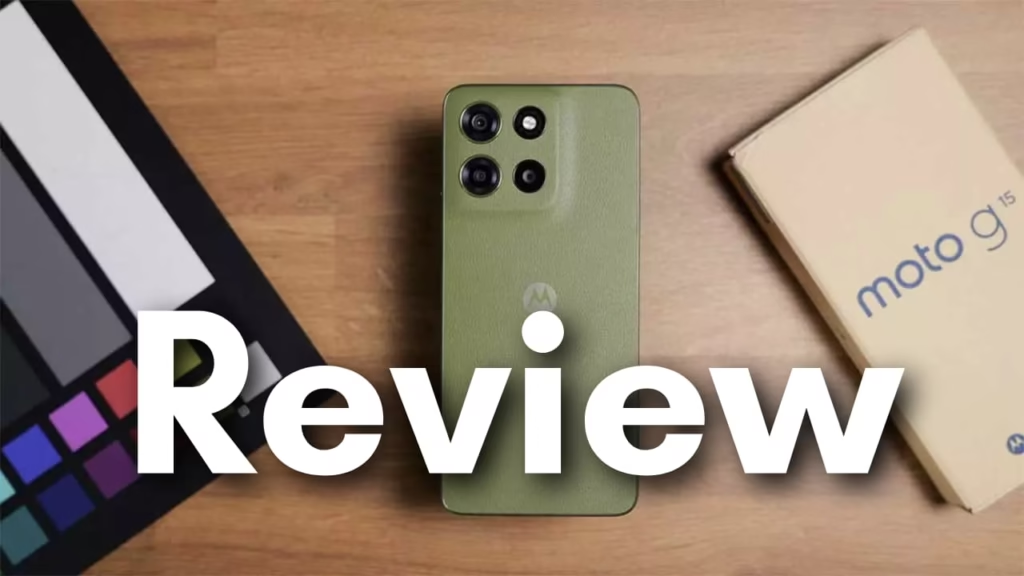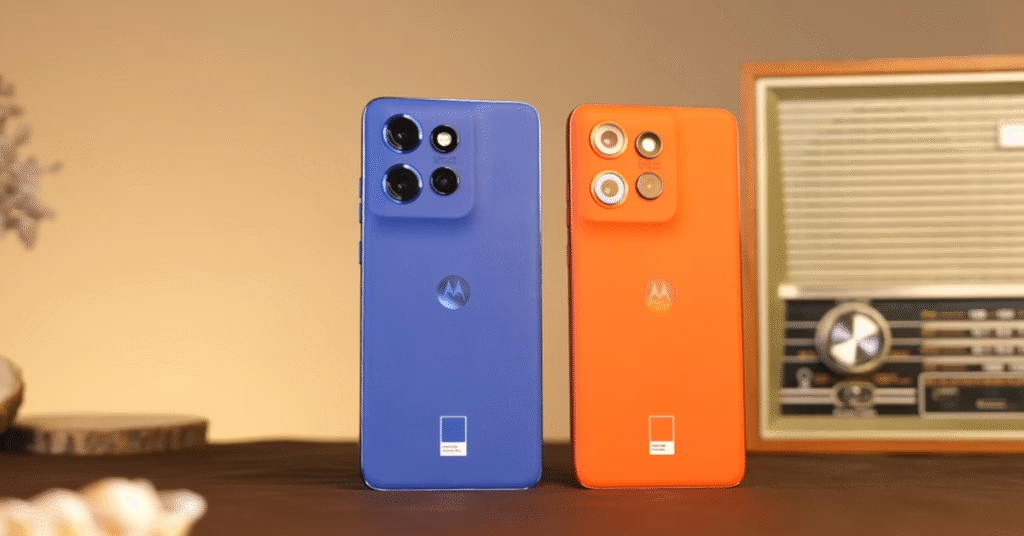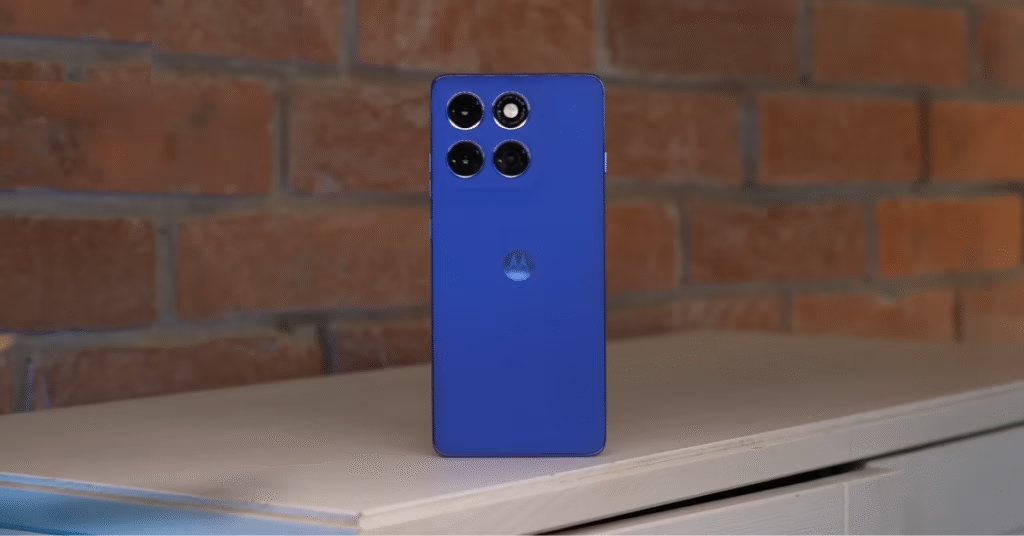
The Motorola Razr 60, also known as the Moto Razr 2025 in the U.S., has officially entered the mid-range foldable market, offering a balance between affordability and innovation. Motorola has tried to capture the essence of its premium Razr lineup but at a more accessible price point. The result is a stylish clamshell device that folds into a compact form, while still delivering modern smartphone features. But is it really worth your money? Let’s dive deep into the design, performance, cameras, and everyday experience.
Design and Build
At first glance, the Razr 60 feels like a proper foldable smartphone but without the ultra-high price tag of premium competitors. When unfolded, the device looks much like a regular handset, but once folded, it turns into a pocketable square.
The phone comes with a stainless-steel hinge that feels refined and durable, staying open at multiple angles for added convenience. Motorola has also improved ingress protection, bringing IP48 certification, which now adds limited dust resistance along with water protection. That’s a notable improvement over last year’s Razr 50.
The back panel combines a smooth, marble-like finish on the lower half and a glass-covered secondary display on the upper portion. Its aluminum frame adds rigidity, while the hinge folds almost completely flat with barely any gap, a clear sign of how much the technology has matured.
Displays and Features
The Razr 60 sports a 6.9-inch foldable LTPO OLED main display with 1080p resolution and a 120Hz adaptive refresh rate. The colors are vibrant, HDR10+ playback is supported, and brightness levels are impressive, peaking around 1200 nits in auto mode. While the crease is visible if you look closely, it’s far less distracting in everyday use.
On the outside, you’ll find a 3.6-inch LTPO OLED cover display with a 90Hz refresh rate and Gorilla Glass Victus protection. Despite being smaller than the Plus model’s almost full-cover screen, it still handles notifications, quick toggles, task switching, and even supports select Google apps and games.
One standout addition is Google Gemini integration, letting you access AI tools without opening the phone. The outer screen also reaches up to 1250 nits of brightness, ensuring visibility even in direct sunlight.
Performance and Software
Powering the Razr 60 is the MediaTek Dimensity 7400 chipset, a mid-range SoC offering slightly better clock speeds than last year’s Dimensity 7300X. Performance is decent for daily tasks, multitasking, and even light gaming, though it doesn’t match the flagship foldables running Snapdragon 8 Gen chipsets.
Benchmark tests reflect its mid-tier nature, with scores adequate for casual users but not for performance enthusiasts. Extended stress tests showed some thermal throttling expected given the compact clamshell design.
On the software side, the phone ships with Android 15 and Motorola’s Hello UI, which adds useful gestures and custom features on top of stock Android. Motorola also promises three years of major OS updates and four years of security patches, ensuring respectable longevity.
Cameras
The Motorola Razr 60 comes with a dual-camera setup on the back: a main wide sensor and an ultrawide with autofocus. There’s also a 32MP selfie camera inside, although most users will likely prefer using the main cameras for selfies with the outer display acting as a viewfinder.
- Main Camera: Produces colorful shots with wide dynamic range during the day, though detail sometimes appears artificially sharpened. In low light, the main sensor captures bright photos with solid colors, though heavy processing is noticeable.
- Ultrawide: Daytime shots are fairly detailed but can suffer from color balance issues, sometimes giving images a greenish tint. At night, performance dips, with more noise and softer detail.
- Selfies: Both the dedicated selfie shooter and main cameras deliver good results, with the main camera offering better detail and autofocus. Group selfies benefit from the ultrawide lens.
- Video: Capable of 4K recording, the main camera performs well in daylight with vivid colors and strong dynamic range. However, stabilization struggles with smaller shakes, and low-light footage often turns noisy.
Overall, the camera system is capable but clearly not on par with flagship foldables like Samsung’s Z Flip lineup.
Battery and Charging
Motorola equipped the Razr 60 with a 4500mAh battery, slightly larger than the previous generation. Despite the bump in capacity, real-world endurance doesn’t impress. In active usage tests, the phone managed just under 10 hours of screen time, which falls short compared to some rivals.
For charging, the device supports 30W wired charging (adapter sold separately) and 15W wireless charging. With the right charger, it hits around 60% in 30 minutes and takes under an hour to fully recharge. While not groundbreaking, it’s a reasonable speed for a mid-range foldable.
Audio and Storage
The Razr 60 features stereo speakers with impressive loudness and balanced sound, making it great for casual media consumption. Vocals come through clearly, with a hint of bass for added richness.
Storage options include 256GB and 512GB variants, though there’s no support for expandable microSD storage. Unlocking the phone is easy with the side-mounted fingerprint scanner, which is fast and reliable.
Everyday Experience
Motorola clearly designed the Razr 60 to appeal to users who want the foldable experience without spending flagship money. The outer screen is functional, the hinge is sturdy, and the build quality feels premium. Its software features and Gemini AI integration make it future-ready.
However, compromises are evident in the chipset performance, camera consistency, and battery endurance. For heavy users or those who demand flagship-level performance, this device may not fully satisfy. But for everyday users who value design, portability, and modern software, it’s a compelling choice.
Verdict
The Motorola Razr 60 delivers a stylish foldable design with decent performance at a more approachable price point. It shines in build quality, software support, and display technology, while its drawbacks lie in average cameras, limited endurance, and mid-range processing power.
If you’re looking for a budget-friendly foldable that offers the essentials of the clamshell experience, the Razr 60 makes sense. But if performance and photography are your top priorities, alternatives like the Samsung Galaxy Z Flip 6 or even last year’s Razr Plus might be better options.
See Also Motorola Edge 60 Pro Specifications: A Complete Review
FAQs
What is the Motorola Razr 60’s main display size?
It features a 6.9-inch LTPO OLED foldable display with 120Hz refresh rate and HDR10+ support.Does the Motorola Razr 60 have water and dust resistance?
Does the Motorola Razr 60 have water and dust resistance?
Yes, it comes with IP48 certification, offering limited dust resistance and water protection.
Which chipset powers the Motorola Razr 60?
The phone runs on the MediaTek Dimensity 7400, a mid-range processor with decent performance.
How long does the Motorola Razr 60 battery last?
It houses a 4500mAh battery, but real-world tests show just under 10 hours of active use.
Does the Motorola Razr 60 support wireless charging?
Yes, it supports 15W wireless charging along with 30W wired charging.
What are the camera specs of the Motorola Razr 60?
It has a dual rear setup with a wide and ultrawide lens, plus a 32MP front camera.
How many Android updates will the Motorola Razr 60 receive?
Motorola promises three years of OS updates and four years of security patches.



